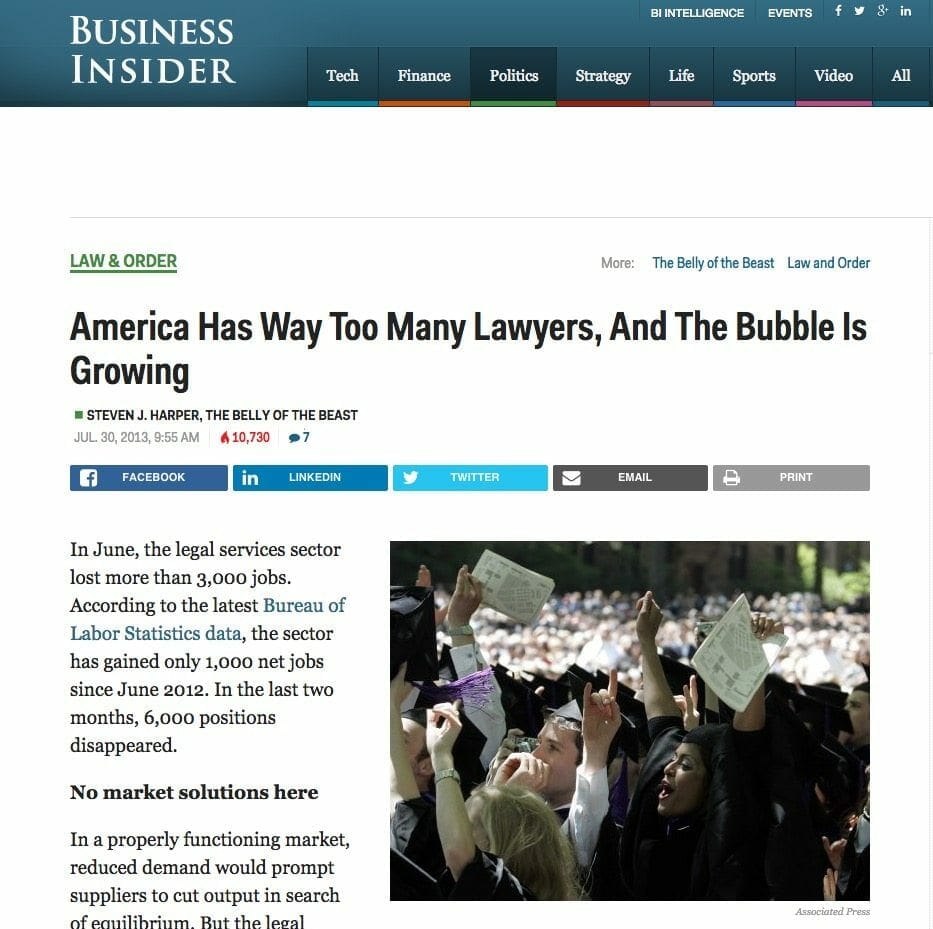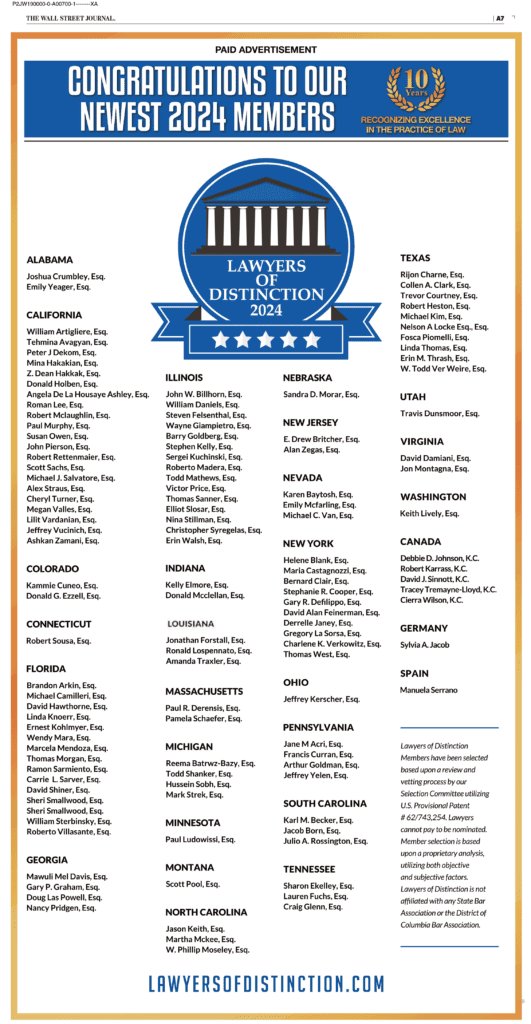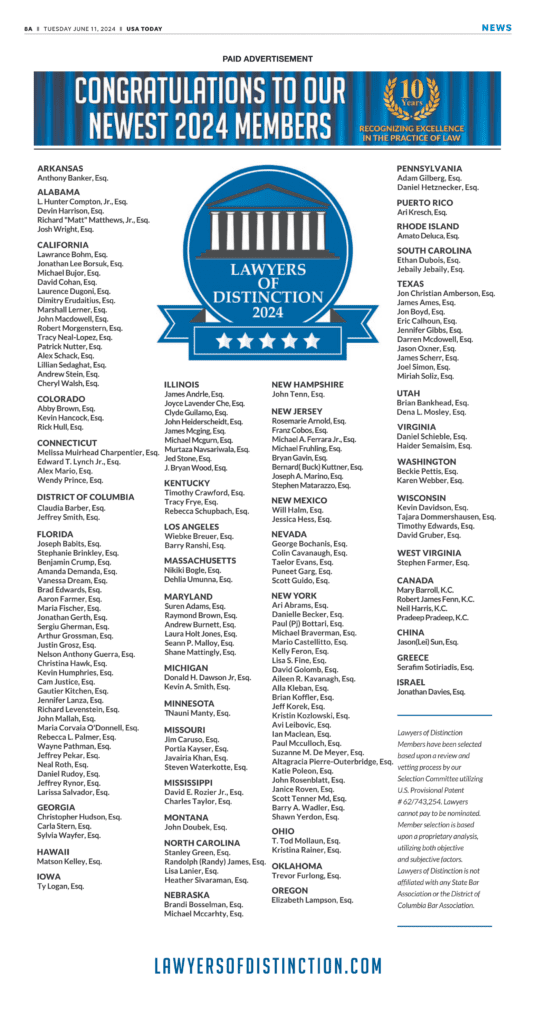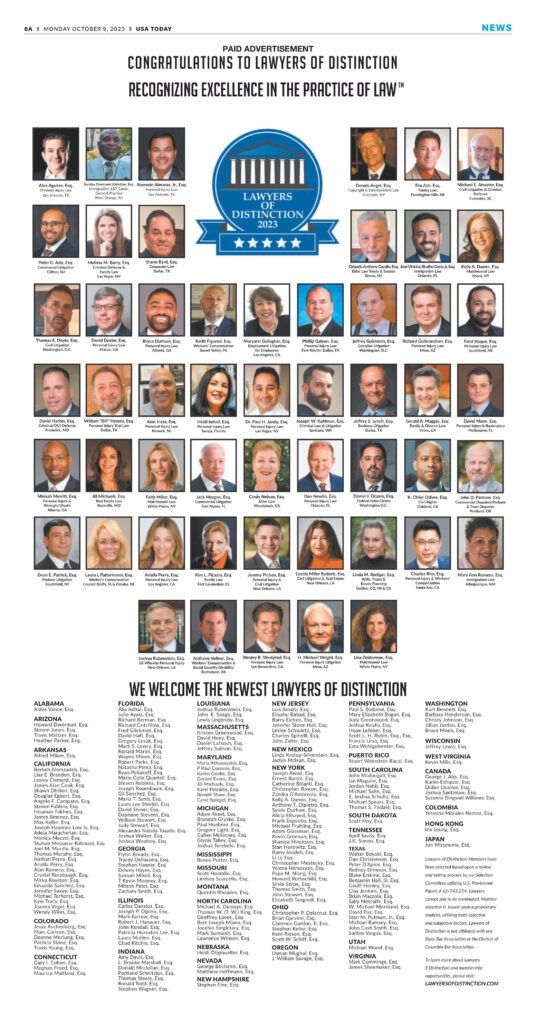 – Article from Business Insider
– Article from Business Insider
In June, the legal services sector lost more than 3,000 jobs. According to the latest Bureau of Labor Statistics data, the sector has gained only 1,000 net jobs since June 2012. In the last two months, 6,000 positions disappeared.
No market solutions here
In a properly functioning market, reduced demand would prompt suppliers to cut output in search of equilibrium. But the legal profession consists of several distinct and dysfunctional markets.
For example, there’s plenty of unmet demand for lawyers from people who can’t afford them. Reduced federal funding for the Legal Services Corporation has exacerbated that problem. So has the rising cost of law school tuition and resulting student debt. Over the past 25 years, tuition increases for law school have far outpaced the rest of higher education.
In another segment of the legal market, demand for corporate legal work has been flat for years. But law schools business models generally have focused on filling classrooms, regardless of whether students will ever be able to repay their six-figure educational loans. Because most tuition revenue comes from federally guaranteed loans that survive bankruptcy, schools have no financial incentive to restrict enrollments — that is, until they run out of applicants.
When might that happen? Not soon enough, although recent headlines imply otherwise.
High-profile reductions in class size
Some schools have reduced the size of their entering classes. For example, the University of the Pacific McGeorge School of Law announced that it is reducing enrollment from the current 1,000 to about 600 — an impressive 40 percent drop.
But as Dan Filler observed at the Faculty Lounge, the reality may be less impressive. Although McGeorge graduated 300 new lawyers annually from 2010 through 2012, its first-year enrollment hasn’t kept pace with those numbers. In 2012, the school had 248 (day and evening) first-year students. In 2011, it had 215. A normalized class enrollment of 200 would be a 20 percent reduction from recent levels. That’s positive, but as explained below, not nearly enough.
About those declining applications
A recent Wall Street Journal article about the “plunge” in law school enrollments noted that “applications for the entering class of 2013 were down 36 percent compared with the same point in 2010…” But a more relevant statistic should be more jarring: “Law school first-year enrollments fell 8.5 percent nationwide.”
Here’s another way to look at it: For the fall of 2004 entering class, law schools admitted 55,900 of 98,700 applicants — or about 57 percent. For the fall of 2012 class, law schools admitted 50,600 of 68,000 applicants — almost 75 percent.
About those jobs
The increase in the percentage of admitted applicants is one reason that the lawyer bubble is still growing. Another is the stagnant job market. In 2008, the Bureau of Labor Statistics projected 98,500 net additional attorney positions for the entire decade ending in 2018. In 2010, it revised that estimate downward to project 73,600 net additional positions by the end of 2020.
Even allowing for attrition by retirement, death and otherwise, the BLS now estimates that there will be 235,000 openings for lawyers, judges, and related workers through 2020 — 23,500 a year. Last year alone, law schools graduated 46,000 new attorneys.
If law schools as a group reduced enrollments by 20 percent from last year’s graduating class, they would still produce almost 37,000 new lawyers annually — 370,000 for a decade requiring only 235,000 — not to mention the current backlog that began accumulating even before the Great Recession began.
One more thing
Which takes us back to the University of the Pacific McGeorge School of Law. According to its ABA submission, only 42 percent of its class of 2012 graduates found full-time long-term jobs requiring a JD. Even if the school caps entering classes at 200, its resulting placement rate would rise to only 64 percent.
U.S. News rankings considerations loom large in all of this. Law schools fear that reducing LSAT/GPA admission standards would hurt their rankings. In that respect, McGeorge’s class size announcement overshadowed a more unpleasant disclosure that new ABA rules now require: scholarship retention rates.
Many law schools try to enhance their U.S. News rankings by offering entering students with high LSATs so-called merit scholarships. But those scholarships sometimes disappear for years two and three. According to Prof. Jerry Organ’s analysis, only 42 percent of students entering McGeorge in the fall of 2011 kept their first-year scholarships. Eleven schools (out of 140 that offered conditional scholarships) did worse.
The overall picture is ugly. Some schools are laying off faculty and staff to counter the financial impact of reduced enrollments. But they’re also keeping tuition high and spending money on LSAT-enhancing scholarships that disappear after the first year, presumably to be replaced with non-dischargeable loans. Meanwhile, almost all of today’s students are incurring staggering educational debt, but many of them won’t find jobs sufficient to repay it.
That’s not a march toward market equilibrium. It’s a growing bubble.
Steven J. Harper, a former partner at the law firm Kirkland & Ellis LLP and an adjunct professor at Northwestern University, is the author, most recently, of “THE LAWYER BUBBLE – A Profession in Crisis.” A version of this column was first published on Steven J. Harper’s blog at thebellyofthebeast.wordpress.com and on The American Lawyer’s Am Law Daily.




